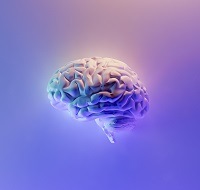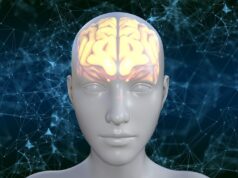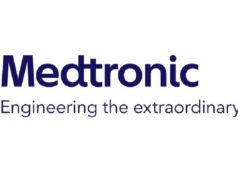 A team including researchers from the USA, Germany and Canada has found that stimulating a specific network in the brain of Alzheimer’s disease patients can reduce their symptoms, recently publishing these findings in Nature Communications. The researchers hope their work will now pave the way for further studies.
A team including researchers from the USA, Germany and Canada has found that stimulating a specific network in the brain of Alzheimer’s disease patients can reduce their symptoms, recently publishing these findings in Nature Communications. The researchers hope their work will now pave the way for further studies.
“Not many Alzheimer’s patients have been treated with DBS [deep brain stimulation], and so isolating a targetable network and showing that it could be predictive of patient outcomes was exciting,” said Andreas Horn (Brigham and Women’s Hospital, Boston, USA), corresponding author of the study. “We refined an optimal DBS site, which future clinical trials of DBS may now use going forward. If more patients are stimulated at this region, we may see clearer evidence across the group supporting the effectiveness of DBS.”
Owing to the longstanding use of DBS to treat other neurodegenerative conditions, such as Parkinson’s disease, the researchers deemed it likely that the same modality could be used to treat Alzheimer’s. However, one obstacle to this is the fact that safe, effective treatments are only possible if the precise brain regions that require stimulation are known.
The starting point for Horn and colleagues’ study, which was carried out in close cooperation with multiple partners, including the University of Toronto in Canada, was a random observation made within a prior Canadian study.
“In one patient, who was being treated for obesity, DBS caused flashbacks—sudden memories of their childhood and adolescence,” said Ana Sofía Ríos (Campus Charité Mitte, Berlin, Germany), the study’s lead author. “This led the Canadian researchers to suspect that stimulating this brain region, which was located in the fornix, might also be suitable for treating Alzheimer’s.”
To investigate this further, researchers working at seven international centres as part of a multicentre study implanted electrodes and administered DBS therapy in the same area of the fornix (fx-DBS) in a total of 46 participants with mild Alzheimer’s disease.
“Unfortunately, most patients showed no improvement in their symptoms,” Ríos continued. “But a handful of participants benefited considerably from the treatment. In the present study, we wanted to find the root cause of these differences, so we compared the exact position of the electrodes in each participant.”
“One of the main challenges is that every brain is different—and that is really important for accurately planting the electrodes,” Horn added. “When electrodes are placed even a few millimetres off target, it could lead to a lack of benefit for the patient.”
While this disappointing outcome is what most of the study participants experienced, Horn and his team were able to use imaging data to determine the exact position of the electrodes in the patients that profited from the procedure.
Researchers from Brigham and Women’s Hospital developed a software capable of precisely registering fx-DBS sites from individual patients into a standardised map of the brain. From there, they calculated the target associated with optimal clinical outcomes, and determined the modulations of local tracts and whole-brain networks that led to the best results. Cognitive improvement was associated with DBS to the direct interface between the fornix and bed nucleus of the stria terminalis—two structures that have been linked to memory function—with tract connections to the circuit of Papez playing a role as well.
As such, according to Horn, the optimal stimulation site was deemed to be the intersection of these two fibre bundles (fornix and stria terminalis).
Using an approach inspired by the current machine learning literature, the researchers then validated their findings in a test cohort of 18 patients whose data had been excluded from the initial stages of the research. They developed a model that was able to accurately determine clinical outcomes in these 18 patients based on where electrodes had been placed during their fx-DBS procedures.
The authors emphasise that this was a retrospective study, and prospective validation is required to confirm their findings, with further clinical studies also being needed before DBS can be approved and used to treat Alzheimer’s disease. However, they believe the results still represent an important next step in this process. The researchers further assert that—while neurodegeneration will progress even in patients who respond well to fx-DBS—the procedure holds the potential to ameliorate symptoms.
“The data we used in this study are unique, and it was an honour that the team entrusted us with it so that we could apply methods we have developed over the past 10 years to identify the sites in the brain that matter most for DBS in Alzheimer’s disease,” Horn concluded. “This is still basic science, but it may give hope in terms of potential treatments that, if applied correctly, could lead to symptomatic improvements.
“If our data make it possible to place electrodes more precisely in neurosurgical studies trialling DBS in Alzheimer’s patients, that would be fantastic. We desperately need an effective therapy that alleviates the symptoms of this disease, and DBS is very promising.”
Going forward, the Horn laboratory will conduct further studies to investigate and define other neural networks in the brain that could be useful targets in the treatment of dementia and Alzheimer’s. Their work will include examining areas of stroke lesions in the brain that lead to cognitive decline to further elucidate the exact circuits in memory formation, and identifying target regions for DBS as well as other methods of neurostimulation.












